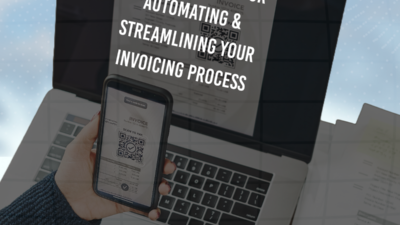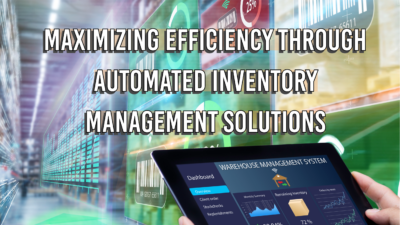Discover the Power of Goal Setting for Business Success in the New Year
Discover the Power of Goal Setting for Business Success in the New Year
Author: GDS
Setting goals is a crucial aspect of business success, as it provides a clear direction and roadmap for achieving desired results. According to statistics, companies that set specific goals are 10 times more likely to succeed compared to those without defined objectives. As the new year approaches, it is essential for businesses to reflect on past performance and set realistic and measurable goals for the future. In this article, we will discuss the importance of goal setting and offer practical tips on how to effectively set and achieve goals using technology, accountability, and support.
Setting goals is a crucial aspect of business success, as it provides a clear direction and roadmap for achieving desired results. According to statistics, companies that set specific goals are 10 times more likely to succeed compared to those without defined objectives. As the new year approaches, it is essential for businesses to reflect on past performance and set realistic and measurable goals for the future. In this article, we will discuss the importance of goal setting and offer practical tips on how to effectively set and achieve goals using technology, accountability, and support.
Understanding the Importance of Goal Setting for Businesses
Goal setting is an essential aspect of business success because it provides a clear direction and purpose for the organization. Without clearly defined goals, businesses can easily lose focus and become overwhelmed with day-to-day tasks. Additionally, setting specific, measurable, achievable, relevant, and time-based (SMART) goals allows for better monitoring of progress and evaluation of success. Goals also serve as a motivator for employees, providing a sense of purpose and satisfaction when achieved. Therefore, businesses must prioritize goal setting as a fundamental strategy for growth and success.
Understanding the Importance of Goal Setting for Businesses
Goal setting is an essential aspect of business success because it provides a clear direction and purpose for the organization. Without clearly defined goals, businesses can easily lose focus and become overwhelmed with day-to-day tasks. Additionally, setting specific, measurable, achievable, relevant, and time-based (SMART) goals allows for better monitoring of progress and evaluation of success. Goals also serve as a motivator for employees, providing a sense of purpose and satisfaction when achieved. Therefore, businesses must prioritize goal setting as a fundamental strategy for growth and success.
Utilizing Technology for Effective Goal Setting
Technology plays a significant role in simplifying and organizing goal-setting for businesses. With various tools and platforms available, organizations can easily track progress, set reminders, and collaborate with team members. Project management software such as Asana or Trello allows businesses to create and assign tasks, set deadlines, and monitor progress in real-time. For financial goals, accounting software like QuickBooks can track revenue and expenses to ensure businesses stay on track with their financial objectives. The key is to find the right technology that aligns with your business goals and helps streamline the goal-setting process.
Utilizing Technology for Effective Goal Setting
Technology plays a significant role in simplifying and organizing goal-setting for businesses. With various tools and platforms available, organizations can easily track progress, set reminders, and collaborate with team members. Project management software such as Asana or Trello allows businesses to create and assign tasks, set deadlines, and monitor progress in real-time. For financial goals, accounting software like QuickBooks can track revenue and expenses to ensure businesses stay on track with their financial objectives. The key is to find the right technology that aligns with your business goals and helps streamline the goal-setting process.
Accountability and Support for Goal Achievement
While technology can assist in setting and monitoring goals, it is essential to have a system of accountability and support within the organization. This can include regular check-ins with team members, setting up specific milestones for goals, and providing resources or training when needed. Having a culture of accountability in the workplace promotes transparency and encourages employees to take ownership of their responsibilities. Support from leaders and colleagues also fosters a sense of teamwork and collaboration, making it easier to achieve goals as a team.
Accountability and Support for Goal Achievement
While technology can assist in setting and monitoring goals, it is essential to have a system of accountability and support within the organization. This can include regular check-ins with team members, setting up specific milestones for goals, and providing resources or training when needed. Having a culture of accountability in the workplace promotes transparency and encourages employees to take ownership of their responsibilities. Support from leaders and colleagues also fosters a sense of teamwork and collaboration, making it easier to achieve goals as a team.
Accountability and Support for Goal Achievement
While technology can assist in setting and monitoring goals, it is essential to have a system of accountability and support within the organization. This can include regular check-ins with team members, setting up specific milestones for goals, and providing resources or training when needed. Having a culture of accountability in the workplace promotes transparency and encourages employees to take ownership of their responsibilities. Support from leaders and colleagues also fosters a sense of teamwork and collaboration, making it easier to achieve goals as a team.
Celebrating Success and Continuous Improvement
As businesses work towards their goals, it is crucial to celebrate milestones and successes along the way. This not only boosts morale but also serves as a reminder of how far the organization has come. At the same time, continuous improvement should be a core value in goal-setting. By regularly reviewing and adjusting goals, businesses can ensure they are staying on track and making progress towards their overall objectives. This can involve seeking feedback from team members, analyzing data, and adapting strategies as needed. By embracing a culture of continuous improvement, businesses can continuously strive for growth and success.
Accountability and Support for Goal Achievement
While technology can assist in setting and monitoring goals, it is essential to have a system of accountability and support within the organization. This can include regular check-ins with team members, setting up specific milestones for goals, and providing resources or training when needed. Having a culture of accountability in the workplace promotes transparency and encourages employees to take ownership of their responsibilities. Support from leaders and colleagues also fosters a sense of teamwork and collaboration, making it easier to achieve goals as a team.
Conclusion
Setting and achieving goals is a critical aspect of business success. By utilizing technology, fostering accountability and support within the organization, and promoting a culture of celebrating success and continuous improvement, businesses can effectively set and achieve their goals. At GDS, we understand the importance of goal achievement and are committed to providing reliable, expert solutions that help our clients reach their objectives.
Celebrating Success and Continuous Improvement
As businesses work towards their goals, it is crucial to celebrate milestones and successes along the way. This not only boosts morale but also serves as a reminder of how far the organization has come. At the same time, continuous improvement should be a core value in goal-setting. By regularly reviewing and adjusting goals, businesses can ensure they are staying on track and making progress towards their overall objectives. This can involve seeking feedback from team members, analyzing data, and adapting strategies as needed. By embracing a culture of continuous improvement, businesses can continuously strive for growth and success.
Conclusion
In conclusion, absorption costing is a powerful tool to help manufacturers understand the total cost of production and make decisions about pricing strategies. It is an essential accounting method that allows companies to remain compliant with GAAP regulations while gaining valuable insights into their cost structure and profit margins. By leveraging absorption costing, businesses can gain a competitive advantage in their marketplace through improved decision-making and increased efficiency.
This comprehensive overview of absorption costing has outlined the key aspects of this accounting method. We hope it will help you make informed decisions about production costs and pricing strategies for your business.
Conclusion
Setting and achieving goals is a critical aspect of business success. By utilizing technology, fostering accountability and support within the organization, and promoting a culture of celebrating success and continuous improvement, businesses can effectively set and achieve their goals. At GDS, we understand the importance of goal achievement and are committed to providing reliable, expert solutions that help our clients reach their objectives.
Conclusion
In conclusion, absorption costing is a powerful tool to help manufacturers understand the total cost of production and make decisions about pricing strategies. It is an essential accounting method that allows companies to remain compliant with GAAP regulations while gaining valuable insights into their cost structure and profit margins. By leveraging absorption costing, businesses can gain a competitive advantage in their marketplace through improved decision-making and increased efficiency.
This comprehensive overview of absorption costing has outlined the key aspects of this accounting method. We hope it will help you make informed decisions about production costs and pricing strategies for your business.
Get Started now with GDS!
Ready to achieve your business goals with GDS? Contact us today and let us help you reach success! Let’s work together towards your business objectives. Let’s start achieving together with GDS! Whether it’s technology solutions, accountability strategies, or continuous improvement practices, we have the expertise and resources to support your journey toward success.
Get Started now with GDS!
Take the first step to utilizing absorption costing by understanding the basics and identifying which areas of your production costs could be improved with this powerful tool. With the right insights at your disposal, you can make informed decisions that help your business become more competitive and profitable.
Mastering the Language of Finance: Essential Accounts Payable Glossary Terms
Author: GDS Navigating the labyrinth of finance can feel like...
Read MoreKey Benefits of Unifying Field Service and Delivery Operations
Author: GDS Navigating the field service and delivery landscape is...
Read MoreDiscover the Power of Goal Setting for Business Success in the New Year
Discover the Power of Goal Setting for Business Success in...
Read MoreThe Comprehensive Advantages of Implementing an Absorption Costing Model
The Comprehensive Advantages of Implementing an Absorption Costing Model The...
Read More
















